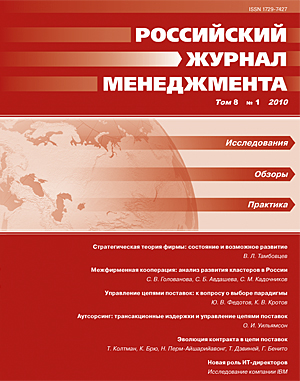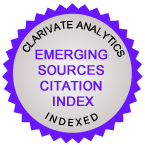Стратегическая теория фирмы: состояние и возможное развитие
Аннотация
В статье анализируются возможности формирования стратегической теории фирмы исходя из трансакционного (контрактного) и ресурсного подходов, а также подхода, основанного на знаниях, концепции динамических способностей, предпринимательских теориях фирмы и процессного подхода. Формулируются промежуточные выводы относительно базовых характеристик стратегической теории фирмы, разрабатываемой с позиций методологического индивидуализма.
Ключевые слова:
стратегическая теория фирмы, трансакционный подход, ресурсный подход, знания, динамические способности, предпринимательская теория фирмы, процессный подход, методологический индивидуализм
Скачивания
Библиографические ссылки
REFERENCES IN LATIN ALPHABET
Becerra M. 2009. Theory of the Firm for Strategic Management: Economic Value Analysis. Cambridge University Press:
Загрузки
Опубликован
Как цитировать
Выпуск
Раздел
Лицензия
Статьи журнала «Российский журнал менеджмента» находятся в открытом доступе и распространяются в соответствии с условиями Лицензионного Договора с Санкт-Петербургским государственным университетом, который бесплатно предоставляет авторам неограниченное распространение и самостоятельное архивирование.





